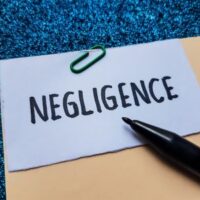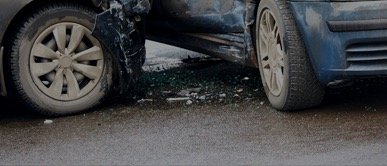To Win a Negligence Case, You Need to Show Duty

We tend to think of negligence as being careless, or making some mistake that causes an injury to someone else. That’s true, but legally, negligence is a bit more complex than that. To win a negligence case, a victim needs to show four separate things: duty, breach, causation and damages (or injury). It’s the first element, duty, that many people find difficult to comprehend.
What is Duty?
Duty asks whether the person or entity that injured us, had any duty to keep us safe in the first place. Another way of thinking of this is asking, if the Defendant was careless, whether the victim was someone that the Defendant could foreseeably see being injured.
Examples of When Duty Exists or Doesn’t
It’s probably easiest to understand duty, by looking at some examples.
The easiest example is someone driving a car. If you drive a car carelessly, who could you reasonably foresee being injured? Perhaps other drivers. Pedestrians. Motorcyclists. Even other passengers in the vehicle.
If someone has a store, who do they have to try to keep safe, who is in the “zone of danger,” should the store act carelessly? The answer is both the store employees, and anybody on the store’s property, legally.
While duty is often relatively easy to prove, because injured victims often are people who were foreseeable to the Defendants, duty sometimes does cause proof problems for victims trying to win a negligence case.
Imagine for example, that there is a power outage. Because the power went out, you fall inside your home. Can you sue FPL for your injuries? To answer that question, ask whether you are a foreseeable victim; that is, from FPL’s perspective, whether they have any duty to keep every person safe in their homes by keeping the power on. The answer is no, there is no duty. FPL in that case, is not responsible for protecting everybody from every accident that could conceivably happen when the power goes out.
Assuming or Creating Duty
Sometimes, a Defendant has no duty to keep someone safe, but does something to create a duty.
For example, I have no duty to jump into a pool to save someone who is drowning (even if it does seem like the right thing to do). But if I do opt to jump in and save someone, I have a duty to do it carefully and as safely as possible and can be sued, if I do it haphazardly
If you park across the street and walk to dinner, the restaurant doesn’t have a duty to keep you safe when you’re walking; you’re not on their property.
But if the restaurant specifically told you to park across the street, then it may be different: the restaurant placed you in that situation and thus, may now have a duty to ensure that you make it from the parking lot to their restaurant, free from danger or hazards that could injure you.
Don’t analyze your negligence case on your own. Let us help. Schedule a consultation with the Tampa personal injury lawyers at Barbas, Nunez, Sanders, Butler & Hovsepian today for help after your injury or accident.
Source:
jec.unm.edu/education/online-training/torts-tutorial/duty-of-care-intent-or-negligence




